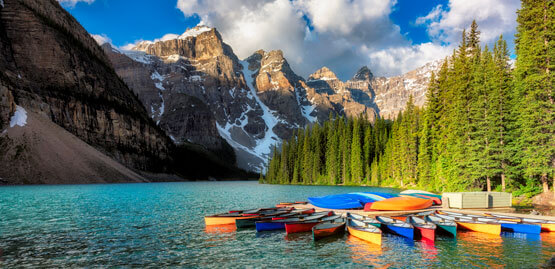






Cheap one-way & return flights to Kano

Which airlines operate flights to Kano from UK?
- Egypt Air
- British Airways
- Swissair
- Turkish Airlines
- Flybe
- Thomas Cook Airlines
- Air France
- Lufthansa
- Air Europa
How long is the flight from UK to Kano?
- Cheaper flights from London Heathrow to Kano can have a flight duration of 22 to 30 hours. This is because of the lengthier stopovers of these flights. Expensive tickets can get you to Kano from Heathrow in about 17 hours.
- The Manchester to Kano flight can be 27 hours long. This includes two stopovers, one in Europe and the other at an African airport.
- The duration of the flight from Birmingham to Kano is about 19 to 24 hours. This flight comes with two stopovers.
- Flights from London Gatwick to Kano can be 25 hours long. This flight comes with two stopovers as well, one in Europe and the other in Africa, depending on the airline chosen to fly with.
Are there any direct flights to Kano from UK?
At the moment, no international airline is operating a direct flight to Kano from any airport in the United Kingdom. The most preferred route to the city is by getting an Egypt Air flight out of London Heathrow Airport. The flight comes with one stopover at Cairo and then has a connecting flight to Kano Airport.
What is the cheapest time of year to fly to Kano?
Fortunately, the cheapest time of the year is also the best time to visit Kano. Local festivals like the Eid provoke the Nigerians to come from abroad to visit their families in Kano when the weather is unbearably hot and humid. Not many are able to return back to Kano to enjoy the weather, which is why the best time to be in Kano is also the cheapest time to be around. The months of December and January are cooler than the rest of the year and can allow the visitor to escape the air conditioner to explore. Not only that, as the demand dives so does the prices on air travel and accommodation. Truly, it is one of the few places on the planet that have it all in the winter months.
Is there a major international airport in Kano?
Yes, the Mallam Aminu Kano International Airport (MAN) serves the city of Kano, in Northern Nigeria. The airport is only 7.5 kilometres away from the Emir’s Palace, which is at the centre of the city. In 2017, the airport served 400,000 passengers. The major bulk of international flight operations cater to the tourists who visit the city and a large number of Lebanese immigrants who move back and forth from the Middle East.
What is the best time to visit Kano?
The best time to visit Kano is in the months of December, January and early February. The weather is nice and pleasant in this part of the year, in Kano. The average high temperature in June can go beyond 38°C, but in the cool December and January span, the highest the mercury can rise to is 26°C. The skies also remain clear within this period and the humidity also remains at only 20%. Kano can be a great vacation spot in these two months and can prove to be a great doorway city into Central Africa.
What are the major landmarks in Kano?
Kano has been an important city since man began trading and bartering goods. The city is the southernmost trading post on the ancient Trans-Saharan trade route. Kano is ruled by an Emir since the 12th century. Industry and economy have always been on the minds of the people of Kano, which is why the city is home to the richest man in the world with an African ancestry. The culture of Kano is an amalgamation of Islamic traditions and ancient Saharan cultures.
- The Emir’s Palace in Kano also known as the Gidan Rumfa is an architectural marvel unique to Nigeria. The Hausa architecture of the building identifies the great heritage this palace holds. The desert colour palette was adhered to when painting the structure. The blue and light brown outer walls and the gardens inside declare the serenity of the place, making it an oasis of peace. The traditional symbol of the “Hausa eternal knot” is embellished over every window of the palace. Visiting the Gidan Rumfa is a must if you are visiting Kano.
- The Gidan Makama Palace Museum houses the cultural treasures of the people of Kano. The building has been designated as a national monument by the government of Nigeria. The palace museum was first built in the 15th century, the mud walls of which are still intact but over the years the structure has seen some modern renovations. The exhibits of the museum illustrate salient features and building materials used in the Hausa architecture. The eleven galleries of the museum display the maps of the Old Kano, musical instruments, ancient hand-carved wooden doors of the city and much more.
- Visit the Kurmi Market in Kano to see its people in action. This is the real Kano. Kurmi Market was first built in the 15th century and it has been trading merchandise ever since. Kano city is a major trading hub of agricultural produce: grain, leather and cotton. The trade flourished through the years with the Trans-Saharan trade routes but recently business with the rest of West Africa and Europe has been gaining momentum. The bazaar is unlike any in the Muslim world, where you could see bundles of cotton, rolls of leather, tanning and dyeing pools and textiles all in one place.
Which events and festivals are celebrated in Kano?
The festivals in Kano are dictated by religion for the most part. Almost all of Kano is Sunni Muslim and celebrate the Ramadan with great religious devotion. At the end of the Ramadan is the Eid celebration which coincides with the Durbar Festival in Kano. The Durbar Festival is celebrated by first performing prayers at the Central Mosque of Kano. The Emir and his brigade of horses parade in the city’s streets. Musicians, acrobats and a troop of drummers accompany the Emir’s parade. The festival ends at the Emir’s Palace, where he addresses the people of Kano and greets them with good cheer.
What are the transportation options available to tourists within Kano?
Blue and yellow taxis zoom through the city of Kano. The taxis are a great way to get around the city. Kano’s streets cannot handle anything larger or bulkier. The taxis are, therefore, efficient and safe for tourists. Recently, pink rickshaws have been introduced to the city, exclusively to be used by women. Kano is generally considered as a safe city and walking to the many attractions of the city can give a new dimension to your holiday experience.
Which five-star hotels and accommodation are available for stay in Kano?
There are a few five-star hotels in Kano; most of them are near the outskirts of the city, quite close to the city’s international airport.
- Bristol Palace Hotel
- Prince Hotel
- GK Guest Palace
- Grand Central Hotel
- Royal Park Guest Inn
Flight destinations near Kano
People who visit Kano also search for these destinations
Top flight destinations in Africa
Flights and flight-inclusive holidays on this website are financially protected by the ATOL scheme. However some are not and at time of booking you confirm what protection is applicable. This website is a part of Moresand Ltd (registration no. 02114691) T/A Travelhouseuk registered in England and wales . Office , 12 Stephen Mews, London W1T 1AH. All bookings protected under the ATOL scheme will receive an ATOL certificate. In cases where a part payment is made that flight booking is ATOL protected. In some cases a certificate does not indicate all the trip segments - this means the omitted parts are not ATOL protected). Please refer to our booking conditions for further information please visit www.atol.org.uk/ATOLCertificate


